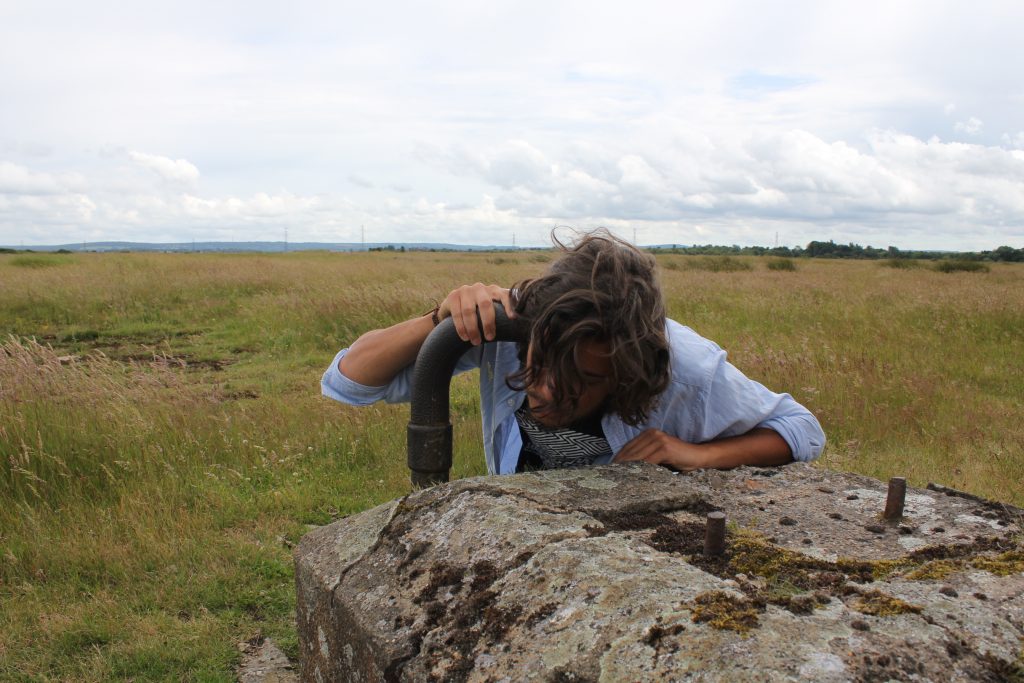
An exhibition in Faversham about artists’ responses to artefacts, objects and events from the first World War will feature work by Tim Meacham, Lecturer in Fine Art and Partner College Liaison Officer from the School of Music and Fine Art – and he will be discussing his work with artist Sara Trillo at 2.30pm on Saturday 20 August.
Taking place at the Fleur de Lis Heritage Centre, Localism and Legacy, curated by Christine Gist for The Faversham Society, also features work by John Dargan, Colin Priest, Sara Trillo and Charles Williams. The exhibition will be open from Saturday 6 – Sunday 28 August 2016, and is supported by Swale Borough Council, School of Music and Fine Art, Ernest Cook Trust, Heritage Lottery Fund, and the National Lottery.
Tim Meacham’s piece, titled “ It was dust…” 1916-2016 , explores the explosions at the Cotton Powder Company works at Uplees near Faversham in April 1916. The resulting sound work is an impression of what would have been heard and felt in the town on Sunday the 2nd April 1916 from 1.30 pm onwards. The work is informed through research into archival material from a number of sources including elements held by the Fleur de Lis museum.
Tim explains: “The work explores the notion of trauma remaining in landscape after violent events and the possibility of an “acoustic memory” allowing one to “hear the past” in the present through the sounds of surviving material and artefacts. The piece is constructed from sounds gathered in the present at the Uplees site, both natural; grass, trees etc.. and human through touching or “playing” the remains of surfaces and structures. It also includes recordings made in Faversham town on 2nd April 2016
These collected sound fragments were then digitally layered and mixed to reconstruct the sound of the 1916 explosions including the deep echoing rumble which followed the initial blasts, which were heard as far away as Norwich. The reported effects of an acoustic shadow are also referenced which in the case of the Uplees blast was the result of a prevailing wind from the East, allowing the blasts to be heard many miles away.
“The easterly wind took the shock of the concussion away from Faversham and swept it over the marshes. It struck Sittingbourne, 7 miles away, with terrific force. It was felt at Chatham, 17 miles away where it blew open the doors of the Naval Barracks.” Digest of Daily Chronicle April 2nd 1916.
The people of Faversham were no strangers to explosions; the manufacture of gunpowder in the area dated back hundreds of years. However, the force and devastation of the Uplees event caused by high explosive as opposed to gunpowder, was certainly outside the experience of most civilians and many military personnel. Like the First World War itself, the event marked a move towards new technologies, previously unimaginable forces and ultimately the embracing of modernity and the world we live in today.
The images of the Uplees site, censored at the time, are as if part of the western front and the imminent horror of the Somme had been transferred to the East Kent marshes.”
Exhibition Venue: Fleur de Lis Heritage Centre, 10-13 Preston Street, Faversham, Kent ME13 8NS
Opening hours: Monday – Saturday 10.00-16.00 and Sunday 10.00-13.00.
Opening reception: Friday 5 August from 18.30-20.00
For more details contact: c.gist@btinternet.com or call 0788 144 1120